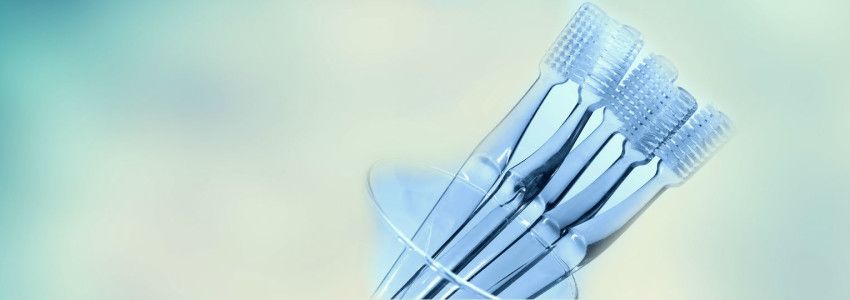
How to Brush
Brushing your teeth is not just for a whiter smile and fresher breath, it’s important for your overall health.
What Is the Right Way to Brush?
The correct way to brush takes at least two minutes — that’s right, 120 seconds! Most adults do not come close to brushing that long. To get a feel for the time involved, try using a stopwatch. To properly brush your teeth, use short, gentle strokes, paying extra attention to the gum line, hard-to-reach back teeth and areas around the filling, crowns or other restoration. Concentrate on thoroughly cleaning each section as follows:
- Clean the outer surfaces of your upper teeth, then your lower teeth
- Clean the inner surfaces of your upper teeth, then your lower teeth
- Clean the chewing surfaces
- For fresher breath, be sure to brush your tongue, too
What Type of Toothbrush Should I Use?
Most dental professionals agree that a soft-bristled brush is best for removing plaque and debris from your teeth. Small-headed brushes are also preferable since they can better reach all areas of the mouth, including hard-to-reach back teeth. For many, a powered toothbrush is a good alternative. It can do a better job of cleaning teeth, particularly for those who have difficulty brushing or who have limited manual dexterity.
How Important is the Toothpaste I Use?
It is important that you use toothpaste that’s right for you. Today there is a wide variety of toothpaste designed for many conditions, including cavities, gingivitis, tartar, stained teeth and sensitivity. Ask your dentist or dental hygienist which toothpaste is right for you.
How Often Should I Replace My Toothbrush?
You should replace your toothbrush when it begins to show wear, or every three months, whichever comes first. It is also very important to change toothbrushes after you’ve had a cold, since the bristles can collect germs that can lead to reinfection.
Additional Tips:
- Wait at least 45 minutes before brushing your teeth after drinking soda, wine, or acidic juices such as orange juice. Sodas and juices leave residual acids on the teeth, and brushing can actually damage the enamel.
- At the very least, brush your teeth in the morning and before you go to bed. Brush after every meal if possible, but don’t overdo it: too much brushing is not good for your teeth.
- Try to brush your teeth after drinking coffee, red wine, or dark teas. Over time, all these beverages can stain teeth permanently.
- Visit a dentist at least every six months for an exam, x-rays, and a cleaning.
- Remember to brush your teeth before breakfast and before bed. Make sure to use mouthwash after!
- If you can’t brush after a meal, at least swish water in your mouth to loosen food particles.
- If your gums bleed easily, that’s a sign your might have inflamed gums (gingivitis). Gingivitis is a serious cause not only of tooth loss, and bad breath, but of infection of the heart valves. Don’t stop brushing if your gums bleed, but do switch to a softer toothbrush.
- Most people follow the same routine while brushing. Consider starting in a different location each time you brush, to avoid missing the same spots repeatedly.
- Brush your tongue and the roof of your mouth for better breath.
- Brush longer in needed areas.
- Watch out not to use a harsh toothbrush, because it can harm your gum causing it to lift off the teeth permanently.
- Wait 10 minutes before brushing after eating a meal.
- There are toothbrushes with timers that tell you how long to brush. These types of toothbrushes may help you when brushing different angles of teeth in your mouth.
- Scrub each tooth in a circular motion over and over.
- Don’t try to put a really big amount of toothpaste on the brush. You only need a pea-sized amount.
- Electric toothbrushes are better because you don’t have to “rub” your teeth—but in general, good brushing habits are much more important than whether or not you use an electric brush.
- Use a toothpick to take out food particles from between your teeth.
- It is advisable to use mouthwash, but if you do use mouthwash, only use an alcohol-free mouthwash.
- Brush for at least two minutes.
- Floss after brushing your teeth.
- Brush your teeth at least 3 times a day. If you want to have REALLY clean teeth you may brush after every meal or snack.










